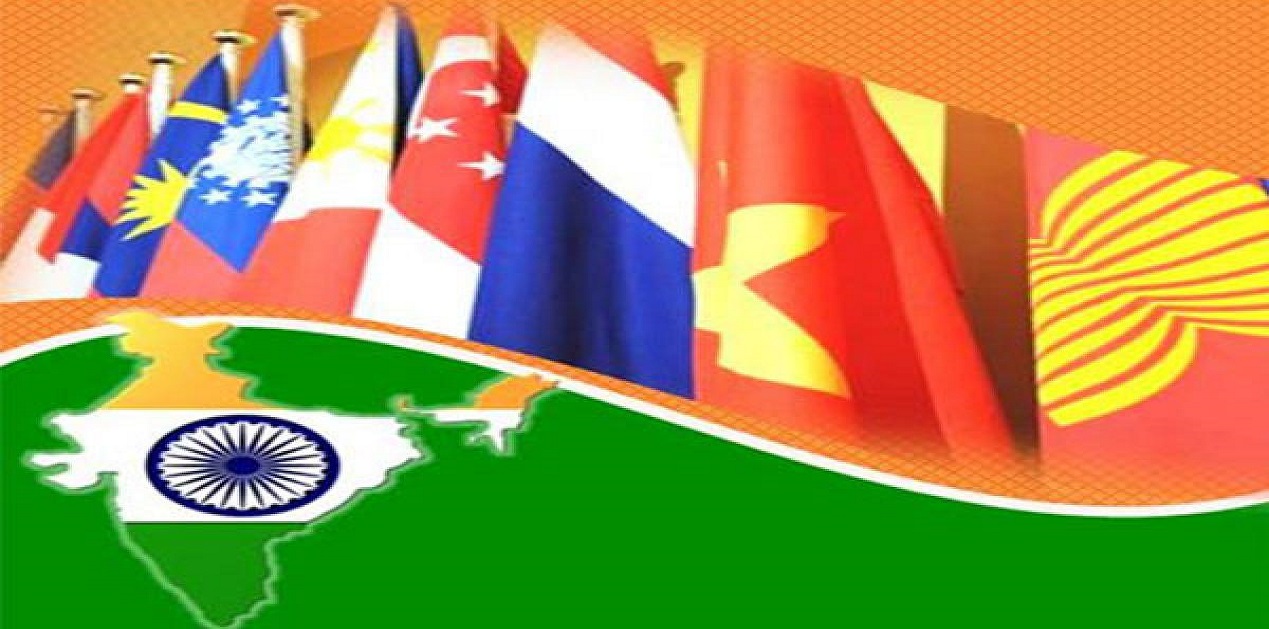India’s cartographic delimitation of Indo-Pacific broadly encompasses sea space from the western Pacific Ocean through Southeast Asia to the western Indian Ocean along the east coast of Africa. In this sea space it pursues an ‘eclectic blend’ of ‘constructivism’ and ‘realism’1 and showcases how a civilisational power with a long history of socio-cultural engagement and trade, premises its contemporary diplomacy and economic engagements. In fact these are reminiscent of the ancient times and represent strong civilisational underpinnings that featured India’s engagements with Southeast Asia and China in the East, and Persia, Arabia, Egypt, Roman Empire and Africa in the West. The contemporary diplomatic initiatives pivot on multilateral engagements; economic enmeshments are through multiple Free Trade Agreements (FTA); and capacity building in these regions under the mantra ‘SAGAR’ (Security and Growth for All). These are emblematic of its soft power which is rooted in antiquity.
Indic Statecraft
The realist framework of India’s Indo-Pacific vision is inspired by the ancient statecraft propounded by the Indian strategic thinker and statesman Kautilya. Also known as Chanakya (350-275 BCE), he authored Arthasasthra. This magnum opus is a treatise in ‘political realism’ which showcases how the political world works with firm foundations in self-interests, strategic autonomy, and the dynamic nature of alliances. 2 It conceptualizes a geo-political and a geo-strategic framework of interests, alliances and strategic conduct, and envisions a ‘regional order’ driven by the priority of interests to deduce regional security architecture. These are labeled as the ‘Mandala’.
Kautilya offers a number of choices to the King to manage relations of the State with the States in the ‘Mandala’ through political dialogue and diplomacy by using tools such as treaties, alliances, neutrality, to employment of ‘just war doctrine’. Mandala pivots on a clear understanding of the elements of ‘Amity and Adversity; Alliance and Convergence; Competition and Cooperation and the larger envision of a norms-rules based regional order’.3 In spatial terms Mandala denotes a zone and schematically it is figurative of concentric circles, which define the relations of a State that lies at the core, with its ‘immediate’, ‘intermediate’ and ‘outer’ ring of countries.
Maritime Mandala
It is useful to locate the Indo-Pacific in the context of maritime ‘Mandalas’ and obtain a clearer understanding of New Delhi’s engagements in the region. India’s Maritime Mandalas stretch across a seamless continuum from the Indian Ocean, though Southeast Asia, to the western Pacific Ocean. New Delhi’s politico-diplomatic engagements, economic outreach and emergent strategic concerns are practiced across the entire swath of Indo-Pacific. The Mandalas are determined by geopolitical priorities, economic interests, and geostrategic imperatives and drive its operational patterns in the realms of naval maneuvers.
India’s ‘Immediate Mandala’ has China and Pakistan, the two contiguous states with whom New Delhi has boundary disputes that remain unresolved; India has engaged in wars with these states. In this Mandala, China and India are the rising powers in Asia and are shaping the strategic dynamics of the region. Chinese political and economic initiatives in South Asia are demonstrated by the 21st century Maritime Silk Road under the Belt Road Initiative. It is also shaping the maritime battle space in the Indian Ocean through naval forays that have intensified during the last few years. It is also building power projection capability with access and basing arrangements in strategic locations such as Djibouti, Gwadar and Hambantota.
In the Immediate Mandala sea-based nuclear delivery platforms have added a new dimension to the already complex and stressed security environment. India has a strong sea-based nuclear deterrent also referred to as the ‘third leg of the nuclear triad’. Likewise, there is a visible Pakistani desire to acquire a similar capability albeit by equipping a conventional submarine to carry nuclear tipped missiles. Furthermore, China now deploys nuclear submarines in the Indian Ocean.
India’s Intermediate Mandala comprises of at least three strategic spaces. First, the Persian Gulf region is an important source for its energy imports and dictates interests in the safety and security of the Straits of Hormuz which is India’s oil jugular. Also, the presence of Indian diaspora in the region are a significant source of remittance economy and feature prominently in the Intermediate Mandala which necessitates a very sophisticated strategy of building close relations with Persian Gulf countries. Second, India’s East African maritime engagements have come by way of Indian Navy’s deployment for assistance in maritime security that began in 2003 by providing waterfront security cover during the African Union Summit held in Maputo, Mozambique.4 Similar initiatives have continued and since 2009 the Indian Navy has deployed warships in the Gulf of Aden to counter Somali piracy. Over all, India has expanded its engagements with the east African–Indian Ocean littorals through several maritime/naval security initiatives.
In the East, the Intermediate Mandala focuses on Southeast Asia where India has enduring economic, trade and cultural ties with several countries of the region that date back to ancient times. Its ‘Act East’ policy is a robust tool for strategic engagements with the ASEAN whose ‘centrality’ is frequently promoted by New Delhi and is underpinned by the ASEAN Treaty of Amity and Cooperation (TAC), the Southeast Asia Nuclear Weapons Free Zone (SEANWFZ) and East Asian Summit (EAS) with its other associated initiatives.
India’s ‘Outer Mandala’ is the arc of the major powers (Australia, Japan and the United States) with whom politico-diplomatic, economic and strategic engagement have been determined by the norm of synergy of robust relations based on strategic convergence. Strategic dialogues at both political and security level have strengthened ties and form the basis for the Quadrilateral Security Dialogue or the ‘Quad’. Besides, Indian, Japanese, and the U.S. navies conduct maneuvers across the entire swath of Indio-Pacific waters.
Mandala and Naval Strategy
The Indian Navy’s maritime strategy is in harmony with the Mandalas’ of the Indo-Pacific. For instance, India’s Military Maritime Strategy (2007) envisioned Indian Ocean region as the primary area of interest and operations. It designated the Red Sea, South China Sea, Southern Indian Ocean, and East Pacific Region as the secondary area of interest but these spaces would gain primacy in case the events and incidents in those areas impinge on Indian interests. In 2015, the Indian Navy published Ensuring Secure Seas: Indian Maritime Security Strategy and acknowledged Indo-Pacific as a strategic space for a variety of interests and operations. It however, retained Indian Ocean as the primary area of interest, and South and East China Seas, Western Pacific Ocean, and their littoral regions as secondary areas.
At the functional level, the concept of ‘tous azimuth’ resonates in India naval strategic thinking. In 2017, the Indian Navy unveiled its Mission Based Deployment (MBD) plan to maintain 24x7 round the year vigil over the Indian Ocean.5 Under the MBD, nearly 15 warships of the Indian Navy are deployed at any time in different sea areas i.e. from the Persian Gulf to Straits of Malacca and from Northern Bay of Bengal to Southern Indian Ocean to East coast of Africa. The deployments in the western Pacific including South China Sea are based on the Indian Navy’s capability to conduct surveillance, detection, identification and prosecution of the challenger before it can jeopardize India’s national interests, damage critical assets at sea or disrupt Indian flagged shipping.
In essence, under the ‘Maritime Mandala’ schema, the Indian Navy engages potential friends and strategic partners to offset the dominant challengers in the Immediate Mandala - currently China with its growing colossal economic and strategic-military capabilities and Pakistan which repetitively invokes the nuclear card.
Zones or Mandala
It is not the policy of the Government of India to publish White Papers. In the absence of such a document, a number of questions about what Indo-Pacific means to New Delhi come to mind. India has at least three useful choices to pursue its vision of an “open, stable, secure, prosperous and inclusive” Indo-Pacific. First would be to conceptualize Zones of Engagement in which both deft diplomacy and strategic autonomy are at play wherein New Delhi’s evolving political and diplomatic profile, economic power and technological-industrial prowess are the determinants of its pursuits. These Zones would be a cluster of countries bound together by constants of geography and with whom India has built robust mutually beneficial relations based on convergent interests and priorities that are part of its political-economic-strategic-cultural continuums. For instance Zone One could be the littorals of Bay of Bengal, Arabian Sea, Persian Gulf and East Africa; Zone Two would be a region encompassing East Asia and the western Pacific to include Japan, Republic of Korea, Taiwan and several ASEAN countries including Philippines in the east and Australia and New Zealand in the South; and Zone Three would naturally be the United States and the Pacific Island states.
The second approach is to internalize Mandala and promote it as a strategy wherein convergence, competition and cooperation would be the primary drivers. In fact India is already practicing an Indo-Pacific strategy in which the Indian Navy, through its maritime strategy, engages countries of the Intermediate and Outer Mandalas’ through naval/maritime operations that feature strong elements of interoperability, and leverages its capabilities to supplement New Delhi’s diplomatic and competitive gains. Importantly, it is not similar to the United States approach to Indo-Pacific which has chosen to articulate it in its National Security Strategy.
The third would be a creative mix of ‘Zones of Engagement’ and ‘Mandala’. This is based on the proposition that the history of the world is replete with examples of civilisational powers such as the Minoans, Phoenicians, Egyptians, Greeks, Romans, Arabs, and Chinese who all relied on the seas for the full realization of their power potential. They exhibited a strong proclivity to use the seas that had expeditionary roles factored in them even as they launched their mercantile trade across the Mediterranean Sea, the Indian Ocean and Asian waters through Southeast Asia as far as China.
Finally, India’s rise in the 21st century is a rediscovery of its power and comes at a time when it’s rising profile and the ability to leverage expeditionary capability is quite evident in its maritime engagements with other maritime powers both in and outside Asia. In essence, India is drawing liberally from its statecraft enunciated in the ancient classic the Arthasasthra of which it has now become a practitioner par excellence.
Notes:
- W. Lawrence S.Prabhakar, “The Emergent Vistas of the Indo-Pacific”, (ed) Rajiv K. Bhatia & Vijay Sakhuja Indo-Pacific Region: Political and Strategic Prospects (New Delhi, Vij Books, 2014).
- Vijay Sakhuja, Asian Maritime Power in the 21st Century: Strategic Transactions China, India and Southeast Asia (Singapore: ISEAS, 2010), pp.278-284.
- W. Lawrence S.Prabhakar, “The Emergent Vistas of the Indo-Pacific”, (ed) Rajiv K. Bhatia & Vijay Sakhuja Indo-Pacific Region: Political and Strategic Prospects (New Delhi, Vij Books, 2014).
- ‘Defence Cooperation’, Ministry of Defence, available at http://www.mod.nic.in/ainstitutions/welcome.html, accessed on 30 June 2019.
- “Indian Navy informs government about the fleet's reoriented mission pattern”, http://www.newindianexpress.com/nation/2018/apr/01/indian-navy-informs-government-about-the-fleets-reoriented-mission-pattern 1795404.html http://www.newindianexpress.com/nation/2018/apr/01/indian-navy-informs-government-about-the-fleets-reoriented-mission-pattern-1795404.html (accessed 19 September 2019).
(Dr Vijay Sakhuja is former Director National Maritime Foundation, New Delhi)
(The paper is the author’s individual scholastic articulation. The author certifies that the article/paper is original in content, unpublished and it has not been submitted for publication/web upload elsewhere, and that the facts and figures quoted are duly referenced, as needed, and are believed to be correct). (The paper does not necessarily represent the organisational stance... More >>
Image Source: https://s3.ap-south-1.amazonaws.com/hansindia-bucket/7896_foreign-policy.jpg











Post new comment